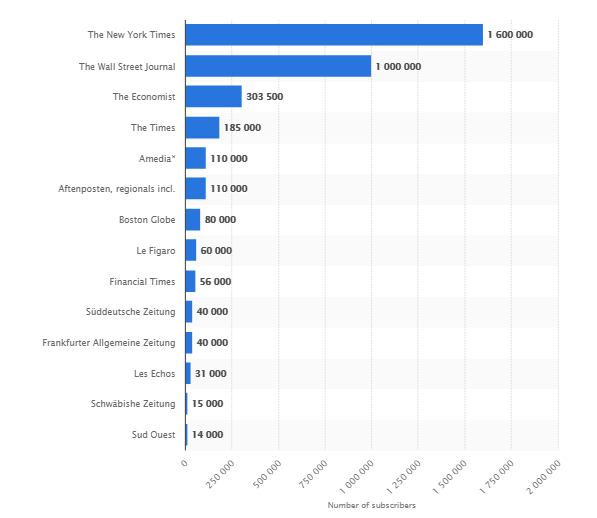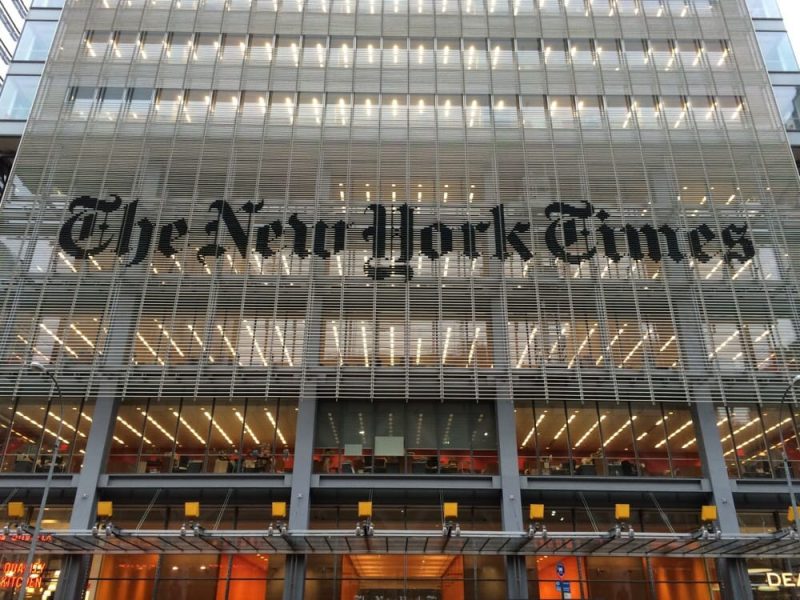The online page of the New York Times greets you with a paywall message that communicates its restrictions to a specified number of accessible articles for visitors per month. Other articles can only be viewed by paying a subscription fee, either for the print edition of the newspaper or for the digital edition. Or both.
Four million subscribers around the world agree with the newspaper that the journalism espoused by the New York Times is worth paying for.
This figure is an all time high for the popular American newspaper that also doubles up as one of the most trusted sources of information in the world. Subscription fees have not limited its revenues; instead, they’re propelling earnings.
Subscriptions and advertising has guaranteed the New York Times an operating profit of Ksh4.2 billion during the third quarter of 2018, which when compared to figures from last year translate to a near Ksh1 billion jump.
Of the four million subscribers, at least three million are digital subscriptions, the New York Times president and chief executive Mark Thompson told investors during a conference call on November 1.
An earnings release by the New York Times put the digital-only subscriptions at approximately 3,095,000 at the end of the third quarter of 2018, a net increase of 203,000 subscriptions compared with the end of the second quarter of 2018.
Of the new subscriptions, 143,000 are from news products, with cooking and crossword subscriptions taking up the rest.
READ : KENYAN MEDIA HAS LOST ITS SOUL
Mr. Thompson said that New York Times journalism is read on every country on earth. “According to our own data, we now have at least one online reader from every member country of the United Nations, including Tuvalu and Antarctica.”
The increase in subscriptions, the highest since the over 300,000 subscriptions experienced during the first quarter of 2017, was attributed to “an electrifying news cycle that played to the Times’ strengths”. This included events surrounding the hearings that elevated Brett Kavanaugh to the US Supreme Court as well as the Op-Ed piece written by “Anonymous” which gave an insight into the Donald Trump White House.
“We also believe that our success with subscriptions across digital and print is a tribute to the quality and creativity of the journalism produced by our colleagues in The New York Times newsroom and editorial departments, and is a validation of our strategy of ramping up investment in journalism.”
Mark Thompson, New York Times CEO
The New York Times third quarter earnings show that print newspaper evolution into the digital space is a fairly possible even though the realities behind it are shifting long held traditions within the print universe.
In a world of free access to information fueled by the internet age, a plethora of news sites have been spurned and this has heralded an apocalyptic trend for print newspapers. Staring into the pessimistic horizon has brought about a need to survive; at times amounting to sensationalism and fake news.
A survival tactic for many has included the paywall; but relatively few prefer to pay for what they presume they can get for free elsewhere, particularly with social media being a source of information.
It is however a testament to the New York Times that growing subscriptions indicate faith and trust in a product attacked by many naysayers as being irrelevant at best, and untruthful at worst.
READ : FAKE NEWS AND THE TRUST IN MAINSTREAM MEDIA
Mr. Thompson said, “Overall subscription revenue – including print – grew by nearly 5 percent year-over-year to $258 million dollars (Ksh26 billion).”
According to assessments by statistics portal website Statista, the New York Times was the global leader in number of digital-only subscriptions last year. As of October 2017, New York Times had a total of 1.6 million subscribers with its closest rival the Wall Street Journal managing 1 million subscribers.

The top two newspapers were the only ones to break the 1 million subscribers barrier.
In as far as advertising is concerned, the New York Times said that print advertising had declined but that the input of digital advertising bumped up ads revenue by 7%.
SEE ALSO : DIGITAL MEDIA OWNERS CHALLENGED TO INCREASE THEIR REACH












6 Comments